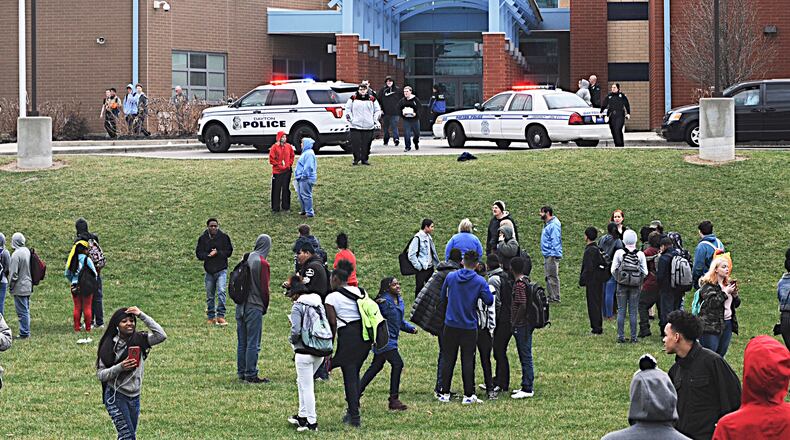“We are actually doing a lot of this already,” said Mad River Local Schools Superintendent Chad Wyen. “Much of it was a result of our district going down the path of having a response team. The other is tied to an identified need to provide a deeper social-emotional learning curriculum and support for students due to adverse childhood experiences (traumas) which we face now more than ever.”
RELATED: How local schools are addressing safety concerns
The guide from the Secret Service’s National Threat Assessment Center first calls for creation of threat assessment teams that should include “teachers, guidance counselors, coaches, school resource officers, mental health professionals, and school administrators.”
Ohio Department of Education officials said they had not yet reviewed the Secret Service’s full report, but did say that Ohio schools are required to consider all threats. ODE said the Center for P-20 Safety & Security provides federal resources to help schools.
“Creating a threat assessment team is not required under Ohio law, but it is recommended,” said Kimberly Nagel, administrator of the Center for P-20 Safety & Security.
EXPERT: How to help at-risk kids and know where the line is
Ohio’s model school safety plan maps out a Planning Team/Safety Committee of school and community stakeholders who should meet regularly and address safety issues within the school.
Tony Thomas, superintendent of Northmont Schools, said his district’s safety team meets monthly with the law enforcement, fire and EMS jurisdictions that cover the district, involving building principals to continually update safety plans.
But Thomas said a key to safety success is going beyond formal law enforcement to create a culture of help and support in the schools.
“We spend a majority of our time making sure kids feel like they belong, and they have somebody they can go to talk to, and they’re reporting things,” he said. “Yes, we want to have a plan in place in case there is a crisis event, but we want to do everything we can to prevent getting to that point.”
PANEL: For school safety, people, training outweigh technology
The Secret Service plan says safety teams should define what behaviors are prohibited in school and which should create concern. They are urged to create a central reporting mechanism, determine the threshold at which law enforcement is brought in to intervene, and establish “assessment procedures” to evaluate how school officials investigate potential threats.
Kyle Lathwell, policy consultant for the Ohio School Boards Association, said while school districts are required to have emergency management plans, those plans’ content is determined at the local level.
“The approach each district takes to safety is dictated by local characteristics and the unique needs of each district,” Lathwell said.
The Dayton area certainly reflects that local variation. Mad River schools have chosen to have armed response teams in their buildings, but are also offering middle and high school students early intervention for drug, alcohol, anxiety and depression issues.
RELATED: Ohio teachers may face more training on suicide
Kettering schools recently increased their number of security cameras, but also boosted the number of mental health counselors in their buildings. Dayton is adding ALICE training to deal with intruders, and West Carrollton is adding a resource officer at the high school.
Erich Merkle, past president of the Ohio School Psychologists Association, said the Secret Service report is largely consistent with evidence-based recommendations from school psychologists and with what Ohio is pushing.
“There is a model school safety plan document (in Ohio),” Merkle said. “That is the recommended practice, but as far as whether that’s being completed with integrity (by individual schools) is another discussion.”
School to school differences are natural as teachers and principals have different thresholds of what concerns they’re willing to handle themselves and what they need to escalate.
But Ken Lackey, director of business services for Kettering schools, said he believes in general, schools are more thorough with security than they were just a few years ago.
“I think we’re to the point where people are erring on the side of, I’m going to tell somebody rather than not,” Lackey said. “I’m going to refer it to an administrator and let them see if they’re going to involve the SRO or the mental health counselor … just because of the culture we’re in, I think we’re erring on the side of too cautious, which is OK.”
About the Author

